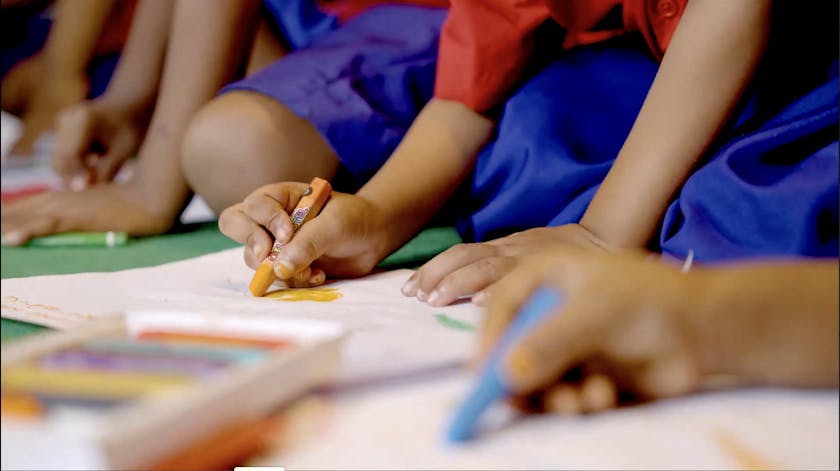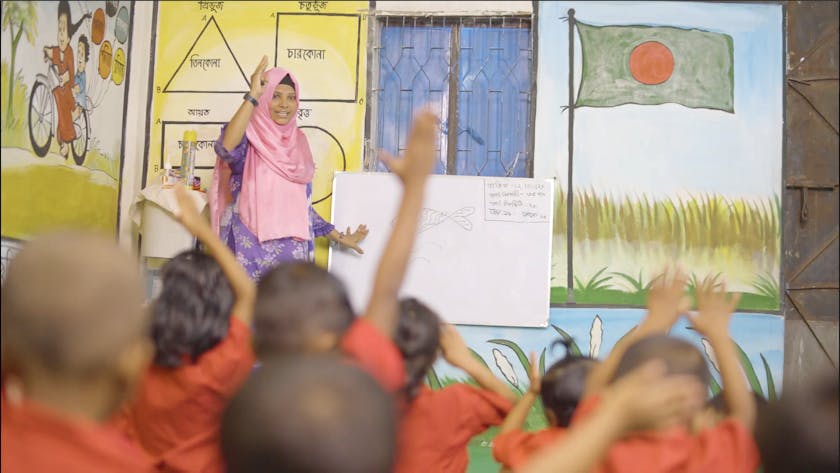Safe little spaces: Protecting early childhood in Bangladesh
In the bustling garment factories of Bangladesh, where over 4 million workers toil long hours, a silent and pressing challenge looms for the country’s youngest citizens. With a majority of these workers being women, many young mothers struggle to balance their shifts with childcare. The minimum wages they earn are often inadequate to cover living expenses, and they frequently lack access to relevant government services for child protection and development.
This situation leaves children particularly vulnerable, as they are often left alone or in the care of older siblings and neighbours in precarious slum communities. These children are at heightened risk of abuse, exploitation, hazardous work, and violence, and many do not have access to essential education and protection services.
Protecting the Most Vulnerable
Every child deserves a strong, supported start, no matter their background.
Our Community-Based Child Protection Mechanism project is a direct response to this urgent need. This strategic initiative is being implemented in collaboration with our partners, Breaking the Silence and Village Education Resource Centre, which works on the ground in two wards of Gazipur City and two in Mirpur, Dhaka. With the dedicated support of the Garcia Foundation, our approach is to build a safety net from within.
Building a Safety Net from Within
A critical component of our community-based approach is the establishment of 16 vibrant Early Childhood Development (ECD) centres. These centres are more than just a place to learn; they are a safe and nurturing haven for children whose parents are working long shifts. Last year, 532 out-of-school children (aged 4-6), mostly the children of garment workers, were enrolled. They receive quality early education and essential life skills, making them less vulnerable to the exploitation and harmful situations they might face in their parents’ absence.

A Community-Led Movement
What makes this project so impactful is the foundation of community involvement. Each centre is supported by local community-based child protection groups—comprised of parents, teachers, and workers—who help ensure the children’s safety both inside and beyond the centre.
Before this centre existed, I used to leave my daughter either at a neighbour’s house or alone at home. I would feel very anxious. Now, I know she’s learning something there, she stays cheerful. Now, I can work with peace of mind.
— Sufia (Mother of a child studying in one of the ECD centres)
The results are not theoretical. Children attending these centres have demonstrated a 46% enhancement across key developmental areas—from physical and cognitive skills to social-emotional growth. These centres also provide a trusted, free alternative to expensive and often unsafe private childcare, giving working mothers peace of mind. The success of these centres proves that a child’s future is not determined by their circumstances, but by the strength of a community that takes a stand for them.

Our approach is not to simply fix problems but to empower communities to protect themselves. We provide specialised training for local protection committees, launch targeted campaigns, and strengthen collaboration between community members and law enforcement. By developing a child-friendly reporting system, we are ensuring that children and families have the knowledge and tools to report abuse and access coordinated support.
This is our commitment—to build a world where every childhood is safe and secure, where every child can flourish regardless of their background.





